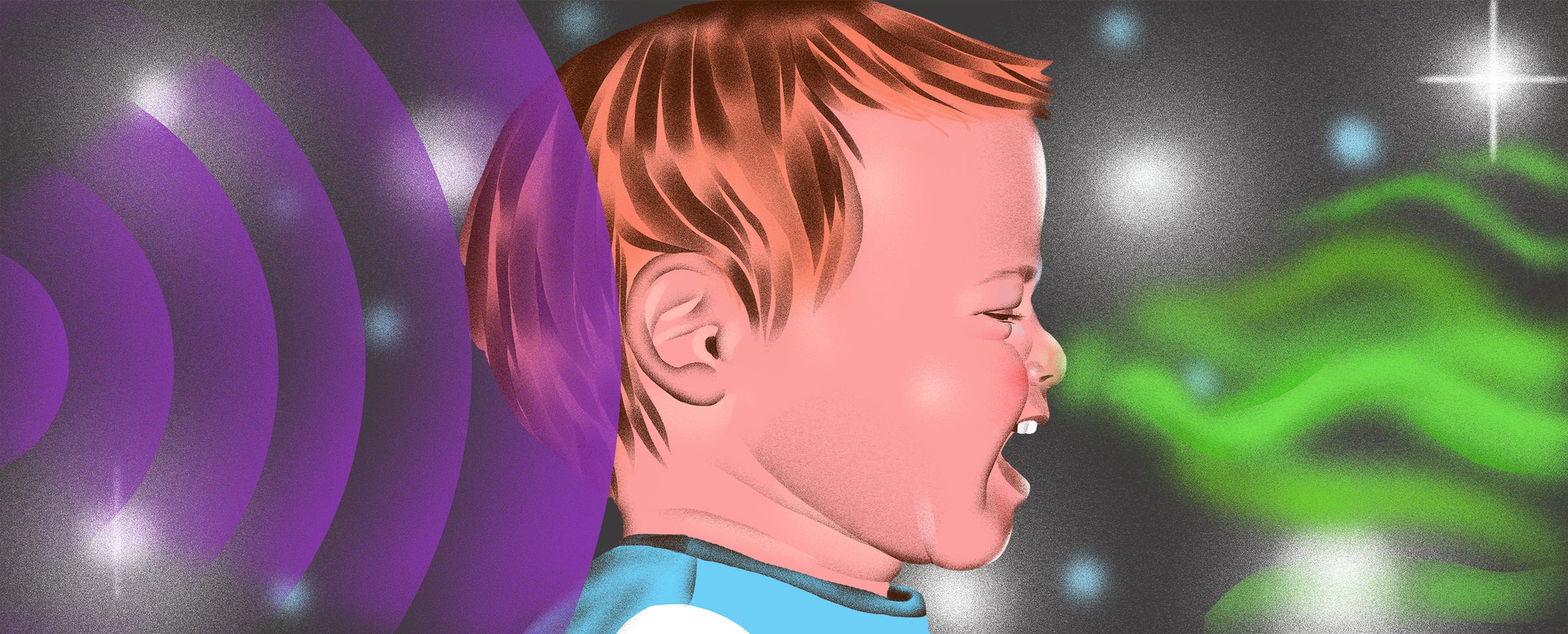Every kid has their little quirks. They cut the tags out of their shirts, loathe the texture of bananas, or avoid fluorescent lights. But for some kids, sensory stimuli can be so overwhelming it impairs daily function. They can’t focus at school and meltdown in the supermarket. The itch of a t-shirt tag ruins their whole day. That’s what it’s like to have sensory processing disorder, or SPD — a controversial condition characterized by difficulty processing sensory information, including sound, touch, and taste.
Some people with SPD are quick to overload; what may sound to a neurotypical person like an innocuous ticking of the clock can cause physical symptoms like headaches, nausea, and vomiting, as well as severe emotional distress. But others may not respond to such stimuli at all: SPD also includes people who are under-responsive to environmental stimuli, those who only the loudest music or brightest colors seem to reach.
The issue isn’t whether sensory processing problems exist (they do), but whether they’re a symptom of other disorders or a disorder in their own right. That’s because SPD is most commonly seen in children with autism spectrum disorder, almost all of whom have some sensory processing problems. Sensory processing issues are also associated with attention-deficit/hyperactivity disorder (ADHD), anxiety disorders, and developmental coordination disorders, as SPD can also influence a child’s motor skills. “It cuts across every diagnosis,” says Lindsey Biel, an occupational therapist and the author of Raising a Sensory Smart Child. But she also believes SPD can and does appear on its own — something many healthcare providers don’t agree with.
This foundational disagreement makes sensory-based interventions tendentious, too. In its same policy, the AAP warned that research on sensory integration therapy, which can include things like wearing weighted vests or desensitizing patients to senses with brushes or balls, was “limited and inconclusive.” While “occupational therapy with the use of sensory-based therapies may be acceptable as one of the components of a comprehensive treatment plan,” it urged caution among patients and providers. (The AAP told Fatherly it has plans to review its policy, though those efforts are still in the early stages.)
“Right now there is a tendency for everyone to think everything is sensory because it’s a lot more comfortable to think, ‘Oh, it’s a sensory issue!’ and not ‘My child is behaving badly,’” Biel says. But new research is helping to define what SPD is — and isn’t — and what might be done to help kids and families struggling with the condition.
Even so, much of the existing science has serious limitations. Sensory interventions are currently based on small trials conducted primarily in children with autism spectrum disorder, which could create a bias in our understanding of the condition. The research hasn’t been very nuanced, either. Study authors have tended to lump all sensory stimuli and purported solutions together, instead of evaluating them one by one. And many interventions lack a theoretical basis to explain how they might actually work in the mind and body to create change.
This is frustrating for parents who are dealing with a child’s sensory processing issues today. Without a formal categorization in the DSM-5, paying for treatment can be difficult. “Insurance is not going to cover it,” Biel says. Occupational therapists can often find a workaround, billing, for example, for the “functional deficits” children with SPD experience. But reimbursement limbo can still be a blow to families.
It’s hard in other ways, too. “These are really difficult problems that cause a lot of stress in family units,” Lane says. When kids routinely meltdown from seemingly innocuous stimuli, parents and siblings are affected by the fallout. As a result, Lane says, “they’re very susceptible to misinformation,” making more robust research all the more important.
“Everybody wants to know, is my child going to get better? Can you fix this?” Biel tells me. “I can say, kids do get better, and they learn how to tolerate things.”
Source: The Push to Separate Sensory Processing Disorder from Autism | Fatherly













